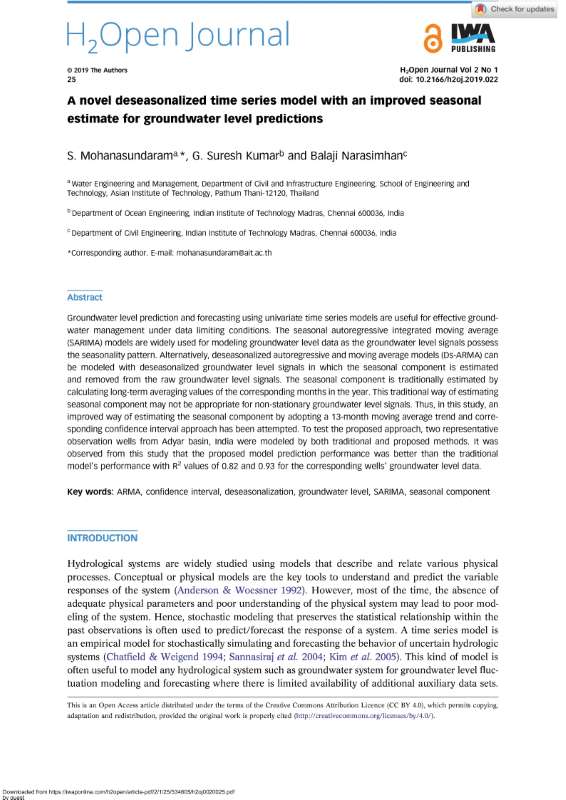Groundwater level prediction and forecasting using univariate time series models are useful for effective groundwater management under data limiting conditions. The seasonal autoregressive integrated moving average (SARIMA) models are widely used for modeling groundwater level data as the groundwater level signals possess the seasonality pattern. Alternatively, deseasonalized autoregressive and moving average models (Ds-ARMA) can be modeled with deseasonalized groundwater level signals in which the seasonal component is estimated and removed from the raw groundwater level signals. The seasonal component is traditionally estimated by calculating long-term averaging values of the corresponding months in the year. This traditional way of estimating seasonal component may not be appropriate for non-stationary groundwater level signals. Thus, in this study, an improved way of estimating the seasonal component by adopting a 13-month moving average trend and corresponding confidence interval approach has been attempted. To test the proposed approach, two representative observation wells from Adyar basin, India were modeled by both traditional and proposed methods. It was observed from this study that the proposed model prediction performance was better than the traditional model’s performance with R2 values of 0.82 and 0.93 for the corresponding wells’ groundwater level data.

